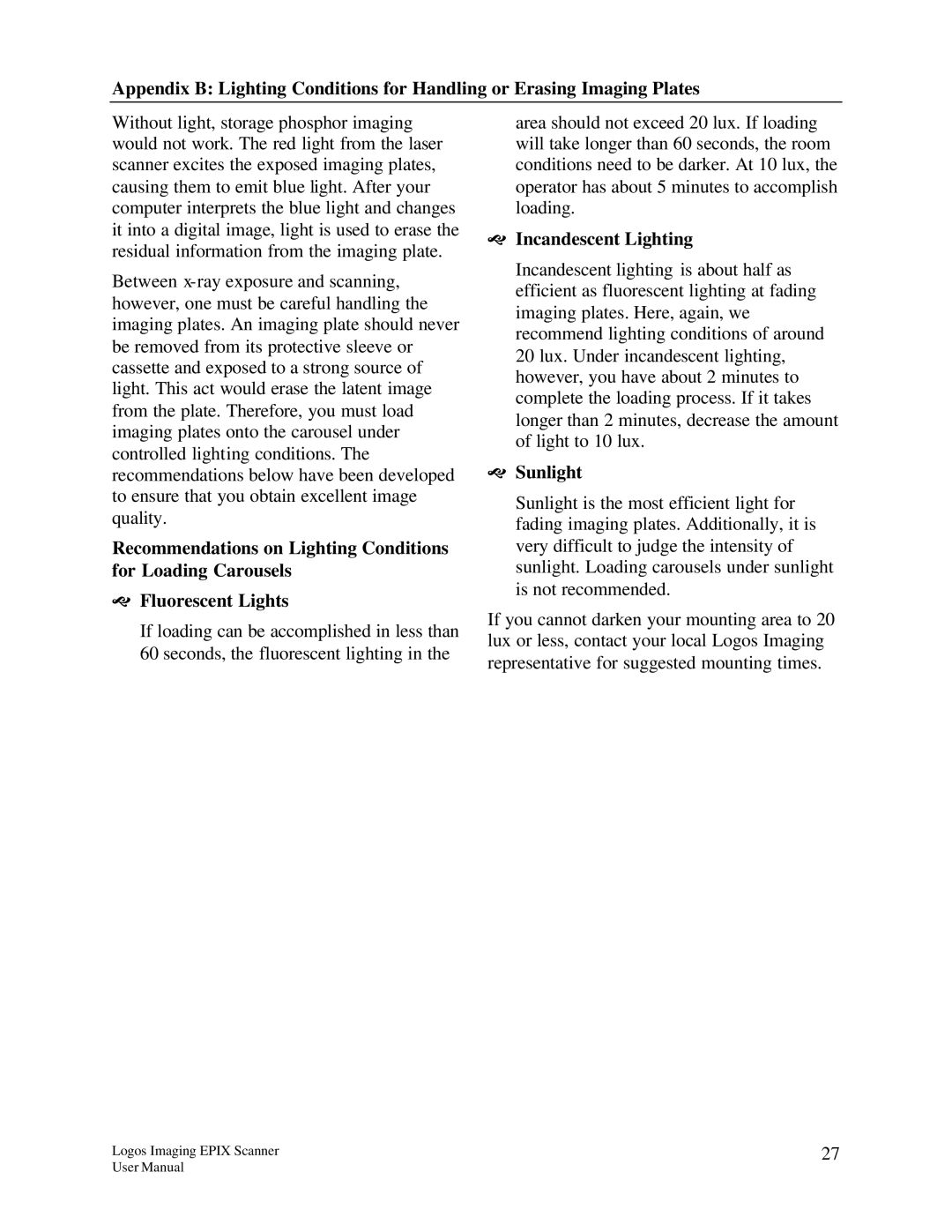Appendix B: Lighting Conditions for Handling or Erasing Imaging Plates
Without light, storage phosphor imaging would not work. The red light from the laser scanner excites the exposed imaging plates, causing them to emit blue light. After your computer interprets the blue light and changes it into a digital image, light is used to erase the residual information from the imaging plate.
Between
Recommendations on Lighting Conditions for Loading Carousels
œFluorescent Lights
If loading can be accomplished in less than 60 seconds, the fluorescent lighting in the
area should not exceed 20 lux. If loading will take longer than 60 seconds, the room conditions need to be darker. At 10 lux, the operator has about 5 minutes to accomplish loading.
œIncandescent Lighting
Incandescent lighting is about half as efficient as fluorescent lighting at fading imaging plates. Here, again, we recommend lighting conditions of around 20 lux. Under incandescent lighting, however, you have about 2 minutes to complete the loading process. If it takes longer than 2 minutes, decrease the amount of light to 10 lux.
œSunlight
Sunlight is the most efficient light for fading imaging plates. Additionally, it is very difficult to judge the intensity of sunlight. Loading carousels under sunlight is not recommended.
If you cannot darken your mounting area to 20 lux or less, contact your local Logos Imaging representative for suggested mounting times.
Logos Imaging EPIX Scanner | 27 |
User Manual |
|
